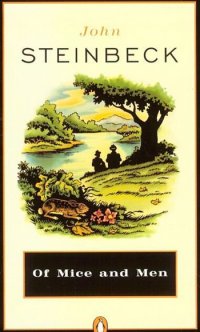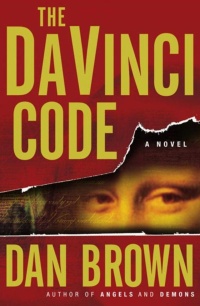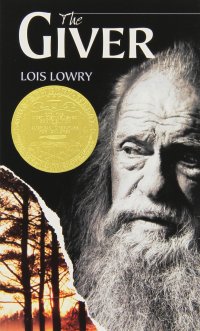September 23rd is the first day of Banned Books Week, an annual event celebrating the freedom to read. According to the event’s official website, Banned Books Week was “launched in 1982 in response to a sudden surge in the number of challenges to books in schools, bookstores and libraries.”
To celebrate, I’ve compiled a list of my 10 favorite books and short stories which have either been banned or challenged somewhere in the world. These are in no particular order.
The Catcher in the Rye (J. D. Salinger)
 The Catcher in the Rye is actually the first banned book I ever read. I was assigned to read it in one of my high school English classes. I remember when we were first handed the book and I looked at the plain white cover with rainbow stripes covering the top-left corner and thought, “ugh, this book looks terrible.” Yes, I know you should never judge a book by its cover, but I was a freshman and didn’t know any better.
The Catcher in the Rye is actually the first banned book I ever read. I was assigned to read it in one of my high school English classes. I remember when we were first handed the book and I looked at the plain white cover with rainbow stripes covering the top-left corner and thought, “ugh, this book looks terrible.” Yes, I know you should never judge a book by its cover, but I was a freshman and didn’t know any better.
It was only after my teacher told us the book was banned that my ears perked up. I, like Holden Caulfield had a bit of a rebellious side and I actually felt like a rebel reading this book. Granted, I never got kicked out of school or ran away to New York City, but rebels come in all shapes and colors, right? I’m happy I read it, though, as it quickly became one of my favorite books.
Why was it banned?
This book has been banned several times over the years, mostly for its excessive amounts of vulgarity and blasphemous comments made by the story’s protagonist. While it’s easy to understand why the book was banned when it was first printed, I think the language Holden uses is probably tame compared to a typical modern hip hop song.
Want to read it? Get it here.
1984 (George Orwell)
 This classic dystopian novel is one which I regrettably never got around to reading until this year, but I suppose late is better than never, right? 1984, like many other classic stories which weren’t on a required reading list for school, was a novel which I’d always intended to read but never found the time (I still have a pile of books I’ve bought but never read).
This classic dystopian novel is one which I regrettably never got around to reading until this year, but I suppose late is better than never, right? 1984, like many other classic stories which weren’t on a required reading list for school, was a novel which I’d always intended to read but never found the time (I still have a pile of books I’ve bought but never read).
I’m happy I found the time though as many of the themes about misinformation are as relevant today as they were in 1950. Thankfully, no matter how much #FakeNews and seemingly endless wars are out there today, at least we don’t have the Thought Police to worry about, right? (right?!?)
Why was it banned?
1984 was banned in several areas of the country for its “explicit sexual content” and “violent, sexually charged language.” The U.S. wasn’t the only country to ban the book, either. Stalin’s Russia also banned the book for its overt anti-communist views.
Want to read it? Get it here.
Of Mice and Men (John Steinbeck)
 If you haven’t read this classic tale of George and Lennie, two migrant workers who struggle to make a living in California during the Great Depression, you’ve really missed out on a story which relentlessly tugs at the heartstrings.
If you haven’t read this classic tale of George and Lennie, two migrant workers who struggle to make a living in California during the Great Depression, you’ve really missed out on a story which relentlessly tugs at the heartstrings.
George is described as small, quick, and dark of skin, whereas Lennie is a simpleminded giant. Despite their differences, these two unlikely friends become a family and share a common dream of owning their own land. But, like all great tragedies, things don’t go according to plan.
Why was it banned?
Although this book received much acclaim after its release, it’s also been one of the most contested and banned books in history. Reasons for the contention include its use of profanity, morbid and depressing themes, and some people’s complaints it’s “derogatory toward African Americans, women, and the developmentally disabled.”
Want to read it? Get it here.
James and the Giant Peach (Roald Dahl)
 You might be wondering how a book about a young boy who goes on a magical adventure with his child-sized bug friends in a house-sized peach could possibly end up being banned by schools and libraries around the country. Well, as it turns out, Mr. Dahl may have slipped in some language which wasn’t appropriate for the age group his book was intended for.
You might be wondering how a book about a young boy who goes on a magical adventure with his child-sized bug friends in a house-sized peach could possibly end up being banned by schools and libraries around the country. Well, as it turns out, Mr. Dahl may have slipped in some language which wasn’t appropriate for the age group his book was intended for.
I think I first read this book when I was in middle school and as such any questionable language went right over my head, which leads me to believe perhaps the banning of this book was unnecessary. Maybe, if the book was titled “Holden Caulfield and the Giant Peach,” I’d be a bit more understanding.
Why was it banned?
As I mentioned, there was some unflattering language in the book which made more than one parent raise an eyebrow. The specific word in question is “ass.” Yep, that one word was enough for several schools and libraries to ban this children’s book – but to be fair, you also couldn’t say the word “ass” on the radio, either.
While the foul language is one of the largest cited reasons for the ban, some areas of the country also banned the book for references to drugs and alcohol, a grasshopper’s racist comment about rather being fried alive than being eaten by a Mexican, and a spider’s apparently seductive lip licking.
Want to read it? Get it here.
The Da Vinci Code (Dan Brown)
 Wait, The Da Vinci code was banned? Well, no, not in the United States, but it was banned in several countries around the world. I actually have some fond memories of this book. I first read this book early in high school and finished it when I was on my way to New York City with my church’s youth group. I loved the book and actually convinced everyone else in the group to read it, too (seems like an appropriate book to read in a church group, right?)
Wait, The Da Vinci code was banned? Well, no, not in the United States, but it was banned in several countries around the world. I actually have some fond memories of this book. I first read this book early in high school and finished it when I was on my way to New York City with my church’s youth group. I loved the book and actually convinced everyone else in the group to read it, too (seems like an appropriate book to read in a church group, right?)
As it turns out, yes, it was. Now, I can’t comment on whether or not Mr. Brown’s book changed the theological beliefs of anyone I convinced to read it, but it did open some really interesting conversations about religion. It also opened a very interesting (and long) late night debate about who would play the main characters if it were made into a movie – I’m proud to say I predicted Tom Hanks would take the role of Robert Langdon … but I was WAY off on everyone else.
Why was it banned?
America is awesome for its freedom of religion. It doesn’t matter if you’re Christian, Jewish, Muslim, Buddhist, you’re free to practice the religion of your choosing. That isn’t the case in other countries and believe-it-or-not those countries found The Da Vinci code to be filled with blasphemous story content and an insult to Jesus Christ.
Want to read it? Get it here.
Frankenstein (Mary Shelley)
 The story behind Frankenstein is almost as fascinating as the book itself. The story goes like this: a group of writers and poets were stuck in a house because of the rain and the Lord of the house suggests they each write a ghost story to help pass the time. Frankenstein was the story Shelley wrote, claiming it came to her in a dream.
The story behind Frankenstein is almost as fascinating as the book itself. The story goes like this: a group of writers and poets were stuck in a house because of the rain and the Lord of the house suggests they each write a ghost story to help pass the time. Frankenstein was the story Shelley wrote, claiming it came to her in a dream.
I’ve even heard theories that Mary wasn’t the actual author of the story, but rather her husband Percy Shelley, who was a well-known romantic poet at the time. Regardless of who wrote the story, it still stands as the first modern horror story and an inspiration to many horror authors around the world.
Why was it banned?
Frankenstein was written in 1817, a time when the church played a pivotal role in the lives of everyone in Europe. One of the central themes of the book is Dr. Frankenstein’s ability to create life in a method other than contraception, an idea which flagrantly went against the teachings of the church.
Want to read it? Get it here.
The Giver (Lois Lowry)
 I don’t remember the first time I read this book, but it’s hard to forget Jonas’ story of living in a perfect, colorless society before having the unpleasant truth shown to him after receiving his life assignment from the Receiver of Memory.
I don’t remember the first time I read this book, but it’s hard to forget Jonas’ story of living in a perfect, colorless society before having the unpleasant truth shown to him after receiving his life assignment from the Receiver of Memory.
It was a great story and I know I wasn’t the only one who thought so. The book not only won the Newbery Medal in 1994, the big wigs in Hollywood thought it was good enough to be made into a movie, too. With that much acclaim, how could anyone want to get rid of it? I guess they’ve spent too much time in the colorless world.
Why was it banned?
According to the Office For Intellectual Freedom, people have attempted to have The Giver removed from libraries and schools more than 11,000 times since it’s release, making it one of the most requested books to be removed. But why? According to the reports, the complainants site “offensive language,” sexually explicit content, violence, and claim it’s too dark for the age group it’s intended for.
Want to read it? Get it here.
The Outsiders (S.E. Hinton)
 I read The Outsiders in middle school. It was assigned reading and, to be honest, I probably would’ve never picked up the book if it weren’t required. At that age, I really didn’t want to read about Greasers and Socs and their socioeconomic woes. Although the story didn’t strike a chord with me at a young age, I’ve since come to love the story and the messages it delivers. It’s also one of the few books which I equally enjoyed the movie adaptation.
I read The Outsiders in middle school. It was assigned reading and, to be honest, I probably would’ve never picked up the book if it weren’t required. At that age, I really didn’t want to read about Greasers and Socs and their socioeconomic woes. Although the story didn’t strike a chord with me at a young age, I’ve since come to love the story and the messages it delivers. It’s also one of the few books which I equally enjoyed the movie adaptation.
Out of all the books on this list, The Outsiders is probably the one book I can most understand why it would be banned. I don’t think the content by itself is worthy of contention if an adult were to read it, but given that its target audience is those in the young adult/teen market, I can see why parents might object.
Why was it banned?
The story centralizes around a young man who comes from a broken home who is heavily involved in gang violence, drugs, alcohol and he uses strong language throughout. While this may have been a reality for some young men from Oklahoma in 1965, it’s easy to see why some parents were weary of their children reading a book which glorifies these actions in its protagonist.
Want to read it? Get it here.
Have you read any of the books on this list? Which books would you add to your list? Let me know in the comments!
